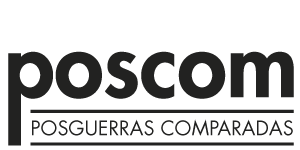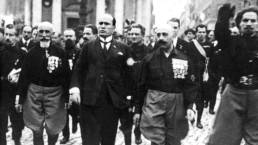Recently, the scientific community has rethought the political outbreaks that characterized the interwar period.
In 2017, new studies on the Bolshevik revolution emerged and the same is expected to happen this year, as
this October will mark the centenary of the March on Rome – the zero day of the Black Shirts’ calendar –
which officially decreed the beginning of the ‘fascist revolution’ according to Mussolini’s regime.
Although the Bolshevik and the Fascist uprisings represent two epoch-making events, many other political
violent upheavals and revolutions disrupted around Europe and Latin America in the aftermath of the Great
War, manifesting a tangible discontent with the liberal governing system, its organization, its laxities, and
corruptions. These movements, that encompassed both right and left political spectrum, represented attempts
to give solutions to the political, economic, and social crisis that occurred in those years. Many of them did
not go beyond the moment of the revolt; others paved the way for further overturns or regime changes; and
still others inaugurated models and established political systems that would profoundly influence the political
landscape for decades to come.
As shown in Mona Ozouf’s seminal work, the festivities associated with the French Revolution can be
considered a pioneering model in setting the tone for such a system of rituals, which both involved people in
politics and controlled them. It is nonetheless true that the celebratory policies of the revolution reached a
political climax during the interwar period. On the one hand, this is due to the outbreaks of the ‘two October
revolutions’ – the one in Moscow in 1917 and the one in Rome in 1922 – whose celebrations quickly took on
the connotations of a public show, in which people, in their dual role of actors and spectators, were informed
and educated to the new political values. On the other hand, it is attributable to the social and cultural upsets
that the Great War caused – including the consolidation of mass parties, the rise of dictatorial regimes and its
new conceptions of ‘democracy’ – as well as to the introduction of new broadcasting and visual media for
propaganda, which raised the bar on the public use of revolution.
Within this framework, this call for paper does not intend to discuss the revolution/counterrevolution
dichotomy nor compare the revolts which occurred after 1917. On the contrary, it aims to analyze the public
use of these revolutions and political outbreaks, to be understood as the set of policies that narrates and visually
represents a selection of historical events in order to legitimize a new political system and generate consensus
around it. Furthermore, while not excluding original contributions on celebrations in Italy and Russia, this call
for paper is particularly interested in investigating how other political outbreaks and new antiliberal regimes
in Europe and Latin America gave rise to celebratory/legitimizing practices.
Scholars are invited to send papers considering a host of related questions and issues, including (but not limited
to) the following:
• What kind of storytelling was used to narrate the revolution/political outbreak? How was it embodied?
• How long has the myth of revolution/political outbreak persisted? How has the founding myth of the
revolution been readapted over time?
• What kind of artistic representations were used? What was the role of artists and intellectuals in
elaborating the celebrations of the political outbreak?
• Is it possible to talk about an overlapping between art and revolution?
• How was the urban space affected? What traces did the commemorations leave in the cities?
• How influential were the Fascist and Soviet models in other contexts? Did a cross-contamination
between different celebrations exist?
• Did counter-narratives exist?
• What role did the population play in the celebrations of the uprising? How was the revolution/political
outbreak commemorated in the expatriate communities? What celebrations were organized abroad?
Contributions from a range of disciplines and perspectives are welcome, including, but not restricted to
contemporary history, political science, media studies, art and architecture history, urban history and cultural
history, aesthetics, and philosophy.
Proposals in English, containing an abstract (up to 500 words max.) and a brief CV of the author(s) (max. 10
lines), must be submitted by email to practicesandcelebrations@gmail.com by 10 September 2022.
The results of the selection will be communicated by 25 September 2022.
Organizing Committee: Annarita Gori (Institute of Social Sciences -UL), António Costa Pinto
(Institute of Social Sciences -UL), Maximiliano Fuentes Codera (Universitat de Girona),
Giorgia Priorelli (Universitat de Girona), César Rina (Universidad de Extremadura), Antonella
Salomoni (Università della Calabria e Università di Bologna).
Scientific Committee: Alejandro Quiroga (Univesidad Complutense de Madrid); Enzo
Traverso (Cornell University), Giulia Albanese (Università di Padova), Lu ís Beneduzi
(Università Ca’ Foscari Venezia), Leandro Pereira Gonçalves (Universidade Federal de Juiz de
Fora), Patrizia Dogliani (Università di Bologna), Rita Almeida De Carvalho (Institute of Social
Sciences – UL); Valeria Galimi (Università Di Firenze); Xosé Manoel Núñez Seixas
(Universidade de Santiago de Compostela).
This conference is organized and funded by the Institute of Social Sciences – University of Lisbona de Lisboa
and the Research Project “La democracia y sus enemigos (1918-1931): España, la primera posguerra, la
dictadura de Primo de Rivera y sus articulaciones con Italia, Portugal y Argentina” (PID2020-112800GBC22)”.


